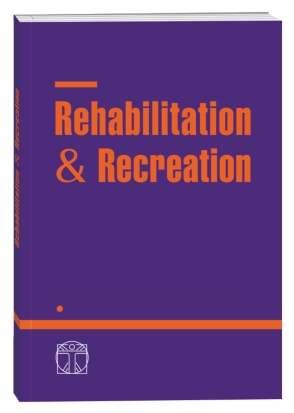PREVALENCE OF SYMPTOMS OF NON-FUNCTIONAL OVERTENSION IN HIGHLY QUALIFIED ATHLETES
DOI:
https://doi.org/10.32782/2522-1795.2022.13.20Keywords:
overtraining, track and field athletes, autonomic dysfunction, injury, overfatigue.Abstract
The purpose of the article was to study the prevalence of symptoms of non-functional overexertion in track and field athletes depending on the average intensity of training classes, the average weekly duration of training, the type of training load performed, the SARS-CoV-2 respiratory infection experienced during the 6 months preceding the examination, the presence of acute trauma or other acute diseases during the last month, the presence of symptoms of autonomic dysfunction (according to Wayne). Material. Successful training should avoid the combination of excessive overload and inadequate recovery. Athletes may experience a short-term decrease in performance without serious psychological or long-term negative symptoms. When athletes do not adequately balance training and recovery, dysfunctional overload can occur. Distinguishing it from overtraining syndrome is very difficult and depends on the clinical result and the diagnosis of exclusion. An athlete will often exhibit the same clinical, hormonal, and other signs and symptoms. The results. The key word for recognizing overtraining syndrome can be "long-term maladaptation" not only of the athlete, but also of several biological, neurochemical, and hormonal regulation mechanisms. Symptoms of overtraining, such as fatigue, reduced performance, and mood disturbances, are believed to be more severe than symptoms of nonfunctional overtraining. However, there is no scientific evidence to support or refute this assumption. One approach to understanding the etiology of overtraining involves ruling out organic disease or infection and factors such as dietary calorie restriction and inadequate carbohydrate and/or protein intake, iron deficiency, magnesium deficiency, allergies, and others, along with identifying initiating events or triggers. The main indicator of overtraining is a reduction in sport-specific performance, and it is important to emphasize the need to distinguish between overtraining and other potential causes of temporary underperformance, such as anemia, acute infection, muscle damage, and insufficient carbohydrate intake. Conclusions. The physical demands of intensive training are not the only elements of the development of overtraining. A complex set of psychological factors appears to be important in its development, including excessive expectations from a coach or family members, competitive stress, personality structure, social environment, relationships with family and friends, monotony in training, personal or emotional problems, and requirements related to study or work.
References
Angeli A, Minetto M, Dovio A, et al. The overtraining syndrome in athletes: a stress-related disorder. J Endocrinol Invest. 2004;27:603-612. 2.Armstrong LE, VanHeest JL. The unknown mechanism of the overtraining syndrome: clues from depression and psychoneuroimmunology (2002). Sports Med. 2002;32:185-209.
Budgett R. Fatigue and underperformance in athletes: the overtraining syndrome. Br J Sports Med. 2018;32:107-110.
Budgett R, Newsholme E, Lehmann M, et al. Redefining the overtraining syndrome as the unexplained underperformance syndrome. Br J Sports Med. 2020;34:67-68.
Fry RW, Morton AR, Keast D. Overtraining in athletes: an update. Sports Med. 2019;12(1):32-65.
Halson SL, Jeukendrup AE. Does overtraining exist? An analysis of overreaching and overtraining research. Sports Med. 2004;34(14):967-981.
Downloads
Published
How to Cite
Issue
Section
License

This work is licensed under a Creative Commons Attribution-NonCommercial-NoDerivatives 4.0 International License.











